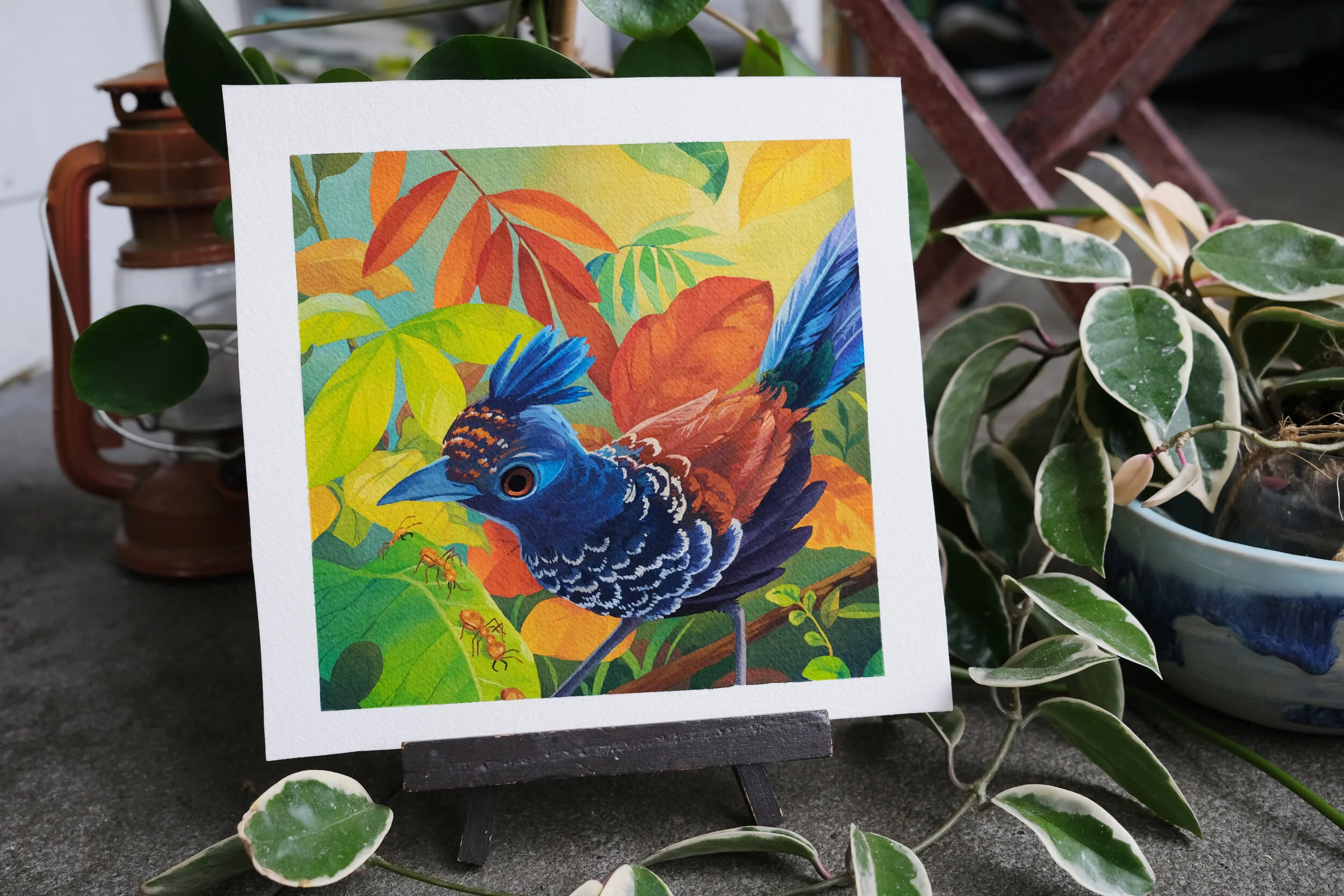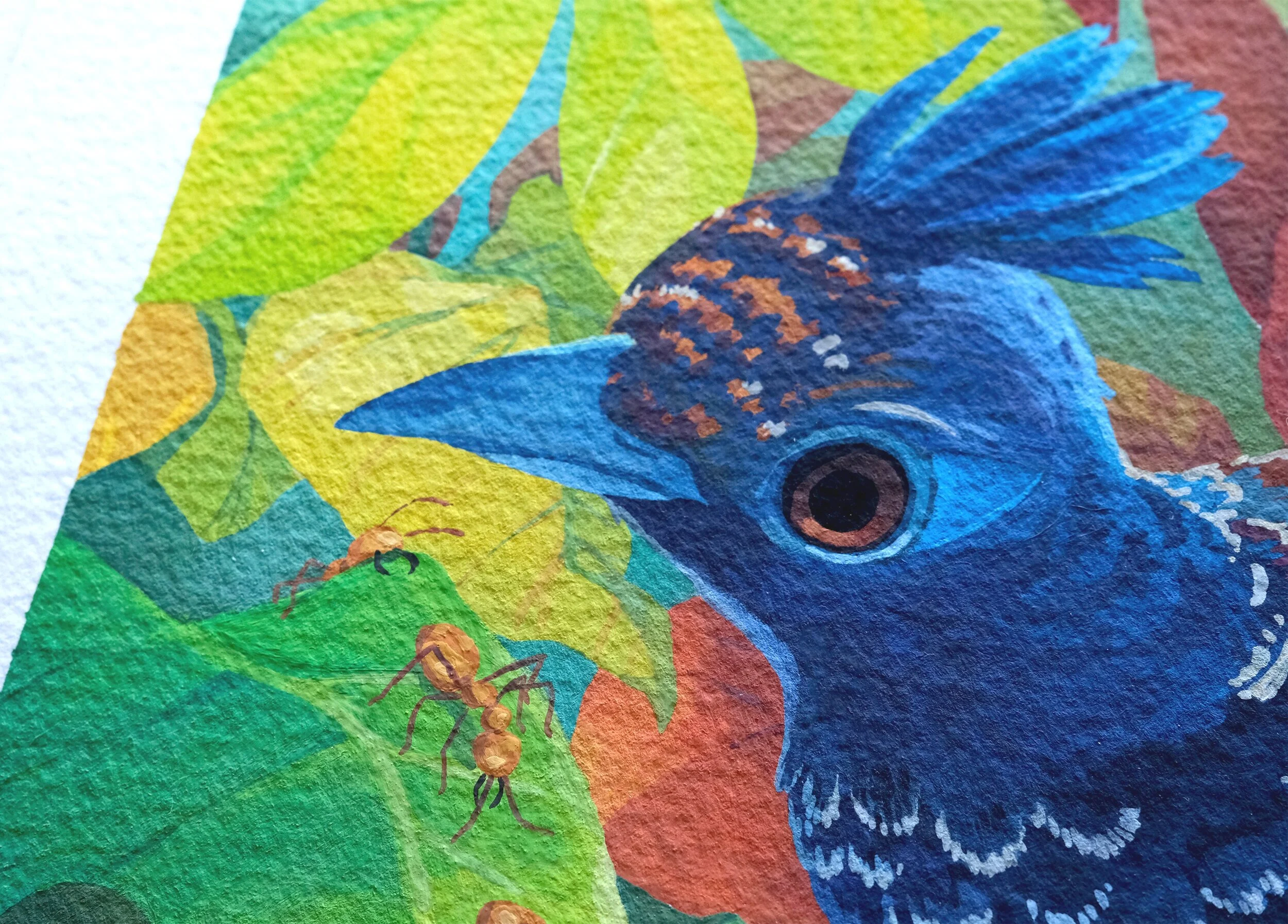Banded Ground-Cuckoo
A secret agent of Western Andes
Habitat: Chocó region in Ecuador and Colombia
Status: Endangered (IUCN Red List)
One can observe the Banded Ground-Cuckoo in the wet foothill forests of the Western Andes in Colombia and Ecuador… but only, if the bird wants to be found. It has a very low population density and is so rare that spotting a Banded Ground-Cuckoo is like an accolade for birders (IUCN). In case you would like to get a glimpse of this funky little bird, take a look at this video shot by the nature conservation project “Un poco del Chóco”: https://www.youtube.com/watch?v=Yubpi4adlY8.
As the cuckoo is such a secret agent, scientists rely on locals for creating a profile of the bird’s behaviour. For example, it has been observed to pursue a very clever foraging strategy: together with other birds, it follows swarms of Army Ants looking for prey. When insects try to escape these ants, they will be caught by the birds instead (IUCN). This is a real dinner-Party á la rainforest.
The Banded Ground-Cuckoo inhabits one of the most biodiverse spots in the world, the Chocó region, and relies on intact primary rainforest. Unfortunately, these forests are threatened by logging and increasing pressure from agriculture such as palm oil plantations (ICUN). Luckily, some of the cuckoo’s range lies within protected areas and protection efforts are on the way.
The rainforest and its bird diversity are fascinating, sound- and colourful. It has inspired a music project called “A Guide to the Birdsong of South America”, which invited local electronic music artists to create a song “in collaboration with” endangered bird species from the featured countries. Successfully raising donations for bird conservation projects in the region, a second volume in the series followed in 2020, featuring human and bird artists from Mexico, Central America and the Caribbean. Travel to the rainforest by listening to their music @shikashikacollective [1] [2].
Write up by Charlotte Walter



